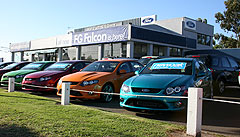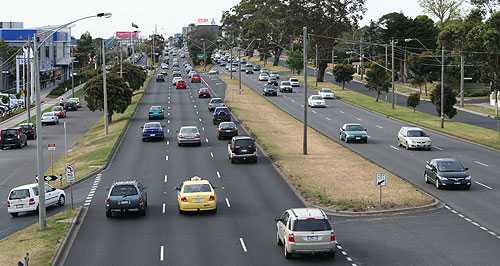Make / Model Search
News - General NewsAustralia’s vehicle fleet growth slowsNation on wheels: Australia’s 12 million vehicles equates to 720 for every 1000 residents. New census results show Australian vehicle fleet now stands at 15.3 million30 Nov 2009 THE slowdown of the new-car market has been reflected in the size of the national car parc, according to vehicle census results released last week. Australian Bureau of Statistics (ABS) data collected in March 2009 shows the national passenger car fleet is now 12 million, having increased by just 219,562 vehicles in the past year. That represents a 1.9 per cent increase over the March 2008 census, down from the average 2.5 per cent rate of growth recorded through the past five years. Motorcycles are bucking the trend, growing by 10 per cent, to 396,309 units to maintain the five-year growth average of 9.5 per cent. When all vehicles are considered, including passenger cars, motorcycles, campervans, buses, campervans, light commercial vehicles and trucks, the total Australian vehicle fleet stands at 15.7 million – up from 15.3 million in 2008 and 13.5 million in 2004. This year, Australia has 720 vehicles for every 1000 residents, up from 674 vehicles per 1000 residents in March 2004.  Western Australia has the highest per capita rate of registered vehicle ownership, with 822 vehicles per 1000 residents. The lowest rate is in the Northern Territory where 577 of all 1000 residents own a vehicle. New South Wales has the third lowest per capita vehicle rate with 645 of every 1000 residents owning a car. NSW still has the largest share of the registered vehicle fleet, at 29.1 per cent, compared with Victoria on 25.6 per cent. NT has the smallest car parc with 0.8 per cent of the nation’s vehicles. Western Australia has the highest per capita rate of registered vehicle ownership, with 822 vehicles per 1000 residents. The lowest rate is in the Northern Territory where 577 of all 1000 residents own a vehicle. New South Wales has the third lowest per capita vehicle rate with 645 of every 1000 residents owning a car. NSW still has the largest share of the registered vehicle fleet, at 29.1 per cent, compared with Victoria on 25.6 per cent. NT has the smallest car parc with 0.8 per cent of the nation’s vehicles.Petrol is still the fuel of choice, with 84 per cent of vehicles running petrol engines. As of March, 2009, 12.8 per cent of registered vehicles were powered by diesel engines. Light commercial vehicles still account for a large number of the diesels – 42.8 per cent, but diesel passenger cars are growing in popularity. The ABS figures show that while the passenger car parc has increased 13.1 per cent since 2004, the number of passenger vehicles fuelled by diesel has increased 80 per cent. The average age of Australian vehicles was recorded as 9.9 years in the latest census – steady on the 2008 census figures. Since 2004, however, the average age has dropped from 10.3 years. The ABS survey found that 20.7 per cent of Australian registered vehicles were built before 1994. Motorcycles were the youngest vehicle type, with an average age of 8.7 years, while campervans were the oldest with an average age of 18.1 years. The state with the oldest vehicles is Tasmania, where the average age stands at 11.9 years. SA has the second oldest car parc with an average of 11 years. NT has the youngest vehicle fleet, with an average age of 8.8 years. The ABS estimates Australians scrapped 640,308 cars in the 12 months to March, 2009. That is higher than any of the past five years and up considerably up from the estimated 597,176 cars that were retired in the year leading up to March 2008. Of all vehicles registered in Australia, 15.1 per cent were light commercials in March 2009. NSW, not surprisingly, has the most light commercial vehicles with 26.6 per cent of the national fleet. Queensland, which is third in terms of vehicle share, has the second largest number of Australia’s light commercials with 26 per cent. Victoria is third with 22.2 per cent.  Read more |
Click to shareGeneral News articlesResearch General News Motor industry news |











Facebook Twitter Instagram